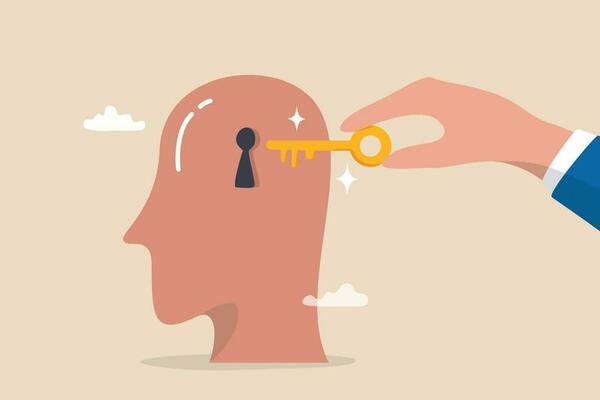
Unlocking the Potential of the Human Mind – The human brain is a marvel of nature a powerful organ capable of processing information, generating thoughts, and driving learning. Understanding the interplay between thoughts, brain function, and education opens doors to optimizing learning processes and fostering intellectual growth. This article explores the intricate relationship between these elements and offers insights into how education can harness the brain’s potential.
The Brain: The Core of Human Thought
The brain is the epicenter of all mental activities. Comprising billions of neurons interconnected by synapses, it orchestrates everything from basic survival instincts to complex thought processes. Here’s a closer look at how the brain operates:
1. Neural Networks and Thought Formation
Thoughts arise from the intricate activity of neural networks. Neurons communicate through electrical signals, creating patterns that correspond to ideas, memories, and emotions. These patterns are influenced by:
- Sensory Input: Information from the environment shapes initial thoughts.
- Past Experiences: Memories stored in the brain inform decision-making and creativity.
- Emotions: The limbic system adds an emotional dimension to thought processes.
2. Plasticity: The Brain’s Adaptability
Neuroplasticity, the brain’s ability to reorganize itself by forming new neural connections, is crucial for learning. This adaptability allows individuals to:
- Acquire new skills.
- Recover from brain injuries.
- Adapt to changing environments.
3. Role of the Prefrontal Cortex
The prefrontal cortex is integral to higher-order cognitive functions such as reasoning, problem-solving, and planning. It plays a vital role in education by enabling focus and critical thinking.
Thoughts: The Building Blocks of Learning
Thoughts are the foundation of learning and intellectual development. They influence how we interpret information, solve problems, and innovate. Key aspects of thoughts in education include:
1. Critical Thinking
Critical thinking involves analyzing and evaluating information to make informed decisions. Education systems that emphasize critical thinking encourage students to:
- Question assumptions.
- Evaluate evidence.
- Develop logical arguments.
2. Creative Thinking
Creativity is essential for innovation and problem-solving. Encouraging imaginative thought in education fosters:
- Original ideas.
- Adaptive thinking.
- Artistic expression.
3. Metacognition
Metacognition—thinking about thinking—helps students understand their cognitive processes. This awareness enables them to:
- Identify effective learning strategies.
- Monitor their understanding.
- Adjust their approaches when needed.
Education: Harnessing the Brain’s Potential
Education plays a pivotal role in shaping thoughts and enhancing brain function. By leveraging insights from neuroscience, educators can create effective teaching strategies that align with how the brain learns best.
1. Active Learning
Active learning engages students in the learning process through discussion, problem-solving, and hands-on activities. Benefits include:
- Improved retention.
- Enhanced critical thinking skills.
- Greater student engagement.
2. Personalized Learning
Every brain is unique. Personalized education tailors instruction to individual needs, abilities, and interests, resulting in:
- Better comprehension.
- Increased motivation.
- Higher academic achievement.
3. The Role of Emotions in Learning
Emotionally charged experiences are more likely to be remembered. Incorporating emotional elements in education can:
- Enhance memory retention.
- Foster a positive learning environment.
- Strengthen teacher-student relationships.
4. Incorporating Technology
Educational technology, such as apps and virtual reality, stimulates the brain and enriches learning experiences by:
- Offering interactive content.
- Providing instant feedback.
- Allowing for immersive learning.
5. Encouraging Lifelong Learning
The brain’s plasticity supports learning throughout life. Educational systems that emphasize continuous learning help individuals adapt to changing circumstances and remain intellectually active.
Strategies for Maximizing Brain Function in Education
To unlock the brain’s full potential in education, consider these strategies:
1. Mindfulness and Focus
Practicing mindfulness can improve concentration and reduce stress, creating a fertile ground for learning. Techniques include:
- Breathing exercises.
- Meditation sessions.
- Mindful journaling.
2. Adequate Sleep
Sleep is vital for cognitive function and memory consolidation. Students should:
- Aim for 7-9 hours of sleep per night.
- Maintain a consistent sleep schedule.
- Create a restful sleeping environment.
3. Physical Activity
Exercise boosts brain health by increasing blood flow and promoting the release of neurotrophic factors. Schools can integrate physical activity through:
- Sports programs.
- Active breaks during classes.
- Outdoor education.
4. Nutrition and Brain Health
A balanced diet supports optimal brain function. Key nutrients include:
- Omega-3 fatty acids for cognitive performance.
- Antioxidants to protect against free radicals.
- Complex carbohydrates for sustained energy.
5. Growth Mindset
Encouraging a growth mindset—the belief that abilities can be developed through effort—empowers students to:
- Embrace challenges.
- Learn from feedback.
- Persist in the face of setbacks.
Challenges and Solutions in Brain-Based Education
1. Overloading Information
Presenting too much information at once can overwhelm the brain. Solution:
- Break content into manageable chunks.
- Use visual aids and summaries.
- Allow time for reflection.
2. Addressing Learning Disabilities
Learning disabilities require specialized approaches. Solution:
- Provide individualized support.
- Use assistive technologies.
- Foster an inclusive classroom environment.
3. Balancing Technology Use
Excessive screen time can hinder cognitive development. Solution:
- Set screen time limits.
- Promote offline activities.
- Use technology purposefully.
The Future of Education and Brain Science
Advances in neuroscience and technology will continue to shape education. Potential developments include:
- Neurofeedback: Helping students understand and regulate their brain activity.
- Artificial Intelligence: Personalizing education through adaptive learning platforms.
- Brain-Computer Interfaces: Enabling direct interaction between the brain and digital devices.
Conclusion
The interplay between thoughts, brain function, and education is central to human development. By understanding how the brain works and implementing brain-based educational strategies, we can empower learners to reach their full potential. Whether through active learning, mindfulness, or technology integration, the possibilities for enhancing education are endless. Embrace the journey of learning, and unlock the boundless potential of the human mind.
